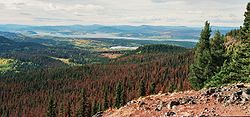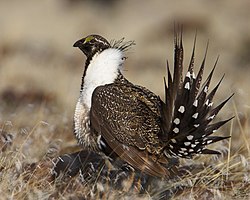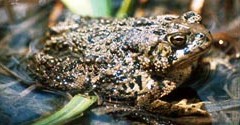
The U.S. state of Wyoming faces a broad array of environmental issues stemming from natural resource extraction, species extirpation, non-native species introduction, and pollution. Wildlife species that have been affected by these issues include:
Contents
- Natural resource extraction
- Industry development
- Air pollution
- Water pollution
- Health effects
- CURED lawsuit
- Wildlife
- Gray wolf
- Grizzly bear
- Pine beetle
- Sage grouse
- Wyoming toad
- Habitat loss
- See also
- References
- Further reading
- External links
- Gray wolf (Canis lupus), locally extirpated
- Grizzly bear (Ursus arctos horribilis)
- Lodgepole pine (Pinus contorta), affected by mountain pine beetles, which threaten to disrupt forests in Wyoming
- Greater sage grouse (Centrocercus urophasianus), affected by natural gas extraction.
- Wyoming toad (Anaxyrus baxteri), extinct in the wild
Within the state organizations and governments are working to combat these environmental threats and restore balance to the ecology. Protection of some of these species has proven controversial.







